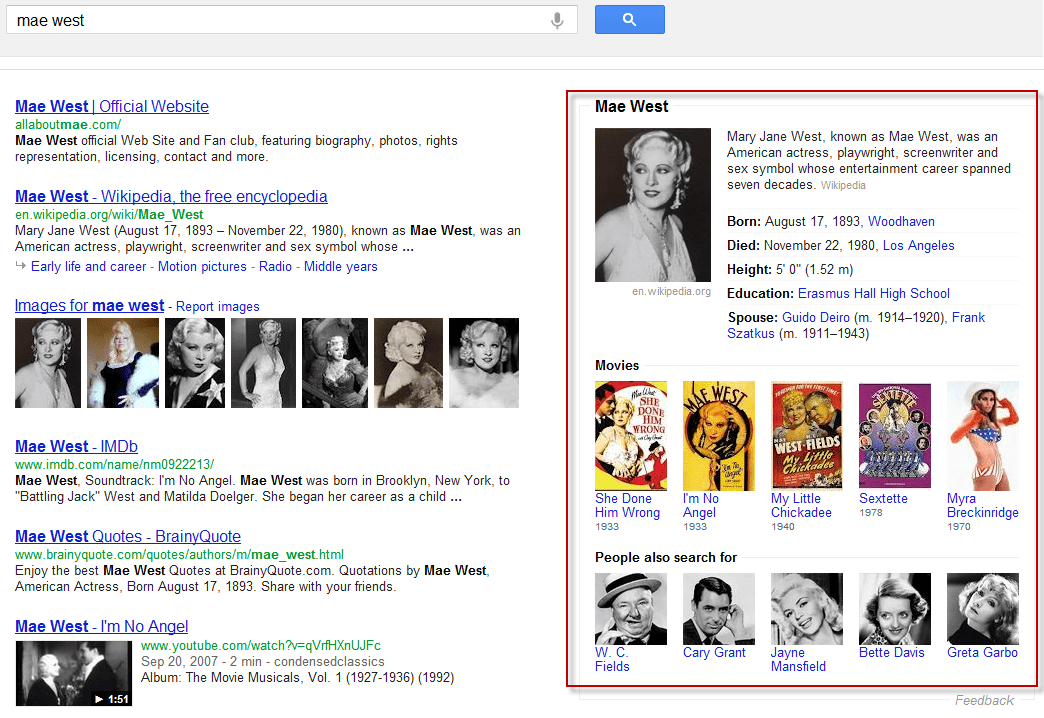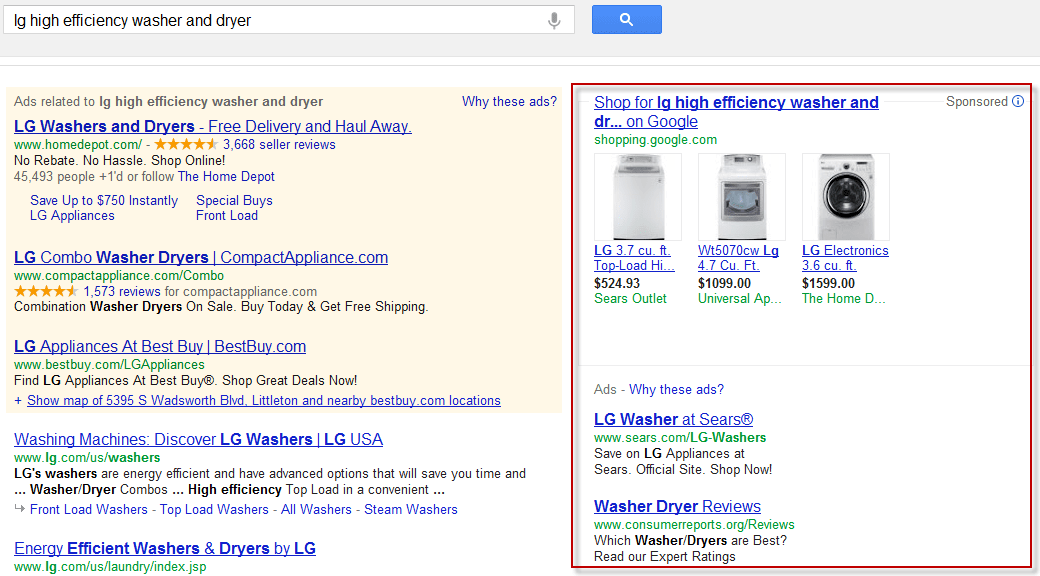
Conspiracy Theory: Google Knowledge Graph Trains Us to ‘See’ the Right Side of the SERP
Google recently announced the release of the Knowledge Graph, a new feature designed to “help you discover new information quickly and easily” by providing informative answers to informational queries directly in the SERP. In other words, for search queries that are typically answered by a high-ranking, ever-present Wikipedia page, some of that top-level information can now be found on the results page itself, so you don’t necessarily have to click through to another site. For example, if you google “Mae West,” you see some basic information (date of birth and death, height, name of spouse, and some of her more well-known movies, as well as related figures) to the right of the organic search results (click to enlarge):
Yesterday, I was talking to Larry about different types of search queries and which ones are likely to serve up the most ads. Informational or question queries, like “who is Thomas Edison” or “area of a circle,” are the least likely to match any paid ads, because they’re not commercial in nature (compare to a high-intent commercial query like “dell flat-screen monitor”). There are generally no sponsored results for these queries because they have little to no value to businesses or Google.
So Google doesn’t stand to make any revenue for these types of queries. But someone at Google was thinking, what do we stand to gain here? That’s when I had my epiphany: By placing highly relevant and trustworthy information to the right of the organic search results, Google is training the eye to “see” that part of the screen. If savvy users trust that area less, because they know it’s full of paid ads, this may subtly persuade them to start paying attention to that area of the screen.
Eye tracking studies have shown that most people (70-80%) don’t look at the right-hand side of the screen, where a lot of the sponsored results show up. This image is via Search Engine Land:
Google has responded to this by giving the sponsored ads more and more territory on the SERP – more and bigger ads at the top, extensions in the middle of the page and so on. The Knowledge Graph may be just another strategy – and a totally different kind of strategy – to take back that space and change how people think about it. As you can see, it’s the same real estate that is devoted to Product Listing Ads on more transactional queries (click to enlarge):
And they both have pretty pictures!
What do you think? Does my conspiracy theory hold any water, or is Google just genuinely trying to help?










Comments
Please read our Comment Policy before commenting.